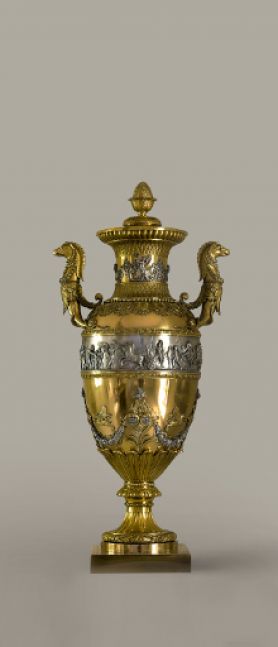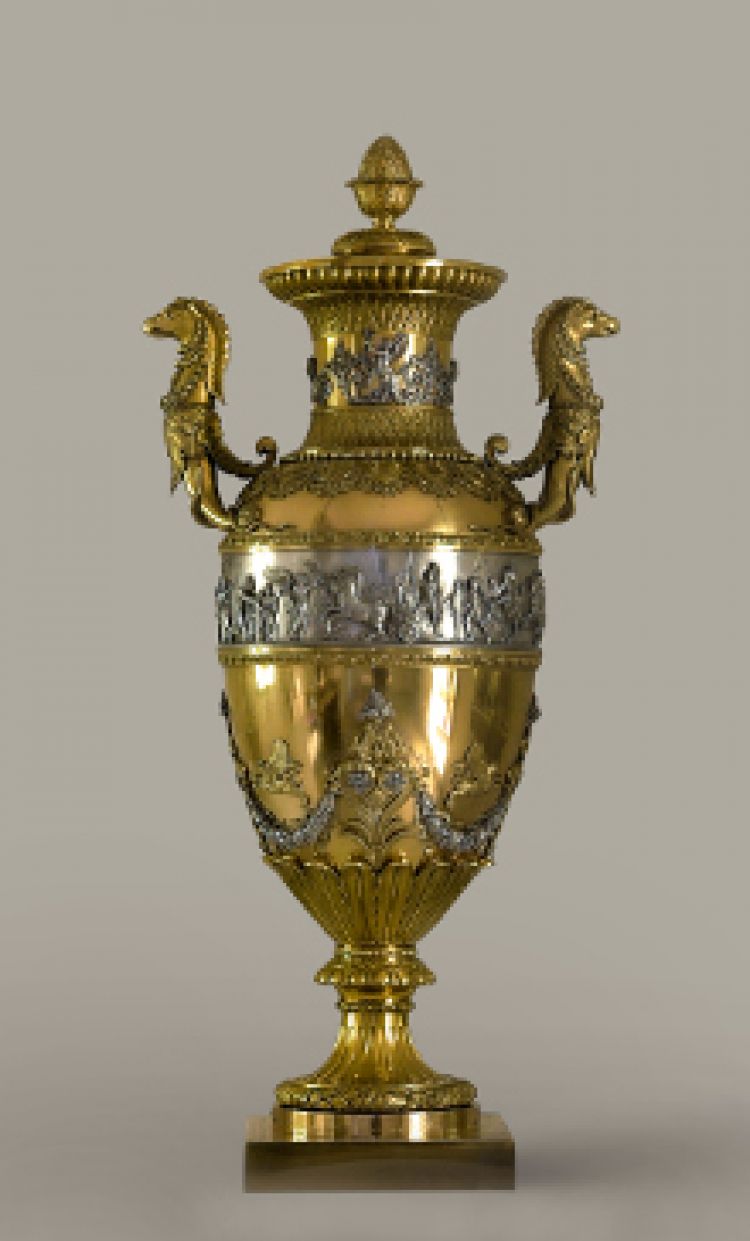Vase

By the time that Strasbourg was annexed to the kingdom of France in 1681, the craft of goldsmithing had reached a high degree of excellence. The city was particularly famous for its silver gilt, known in French as vermeil. Goldsmithing was regulated by the craft guilds and the craft was generally passed on from father to son. Some families such as the Kirsteins, in particular Jacques Frédéric Kirstein, acquired great fame in the exercise of their craft. This monumental baluster vase executed in 1825 was his most prestigious creation, presented by him at the eighth exhibition of industrial products in 1834. Its decorative richness and quality of execution, combining techniques such as chasing, engraving and lost wax silver casting, make it an exceptional work. The two handles are in the form of griffin heads emerging from scrolls of acanthus leaves and the fasteners attaching them to the vase are enwrapped by snakes. The circular frieze surrounding the vase recalls ancient painted ceramics and depicts the Napoleonic campaigns. Here the goldsmith expresses both his loyalty to Napoleon I and his faithfulness to the ornamental repertoire of the Empire period. Unlike other city silversmiths who did not survive the Revolution, the activity of the Kirstein family continued until the mid-19th century. Jacques Frédéric Kirstein was one of the greatest provincial goldsmiths of his time.
